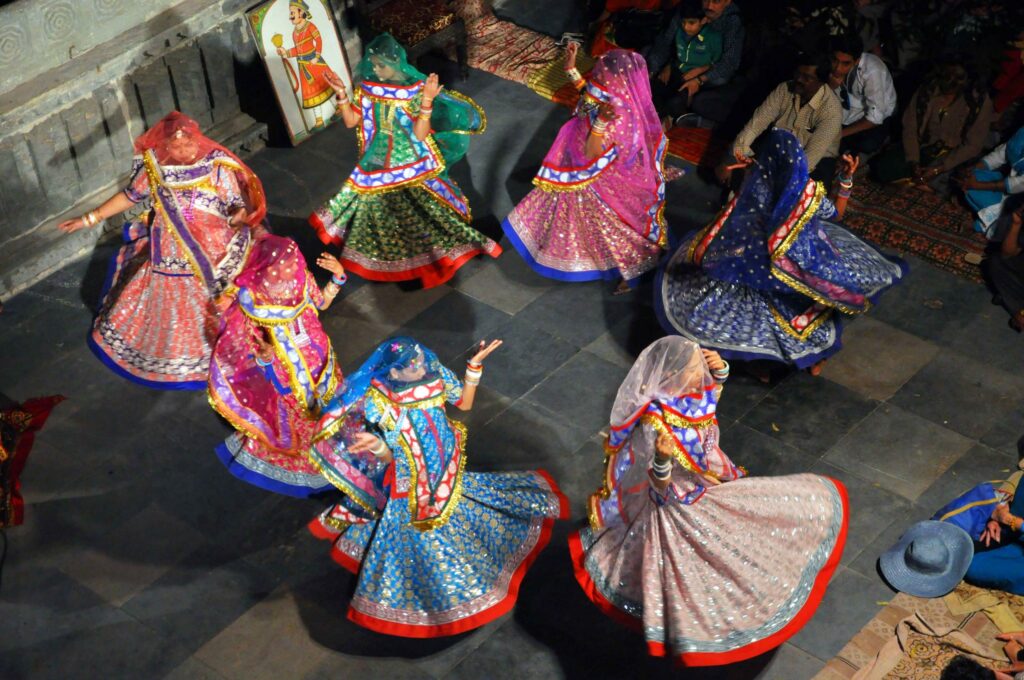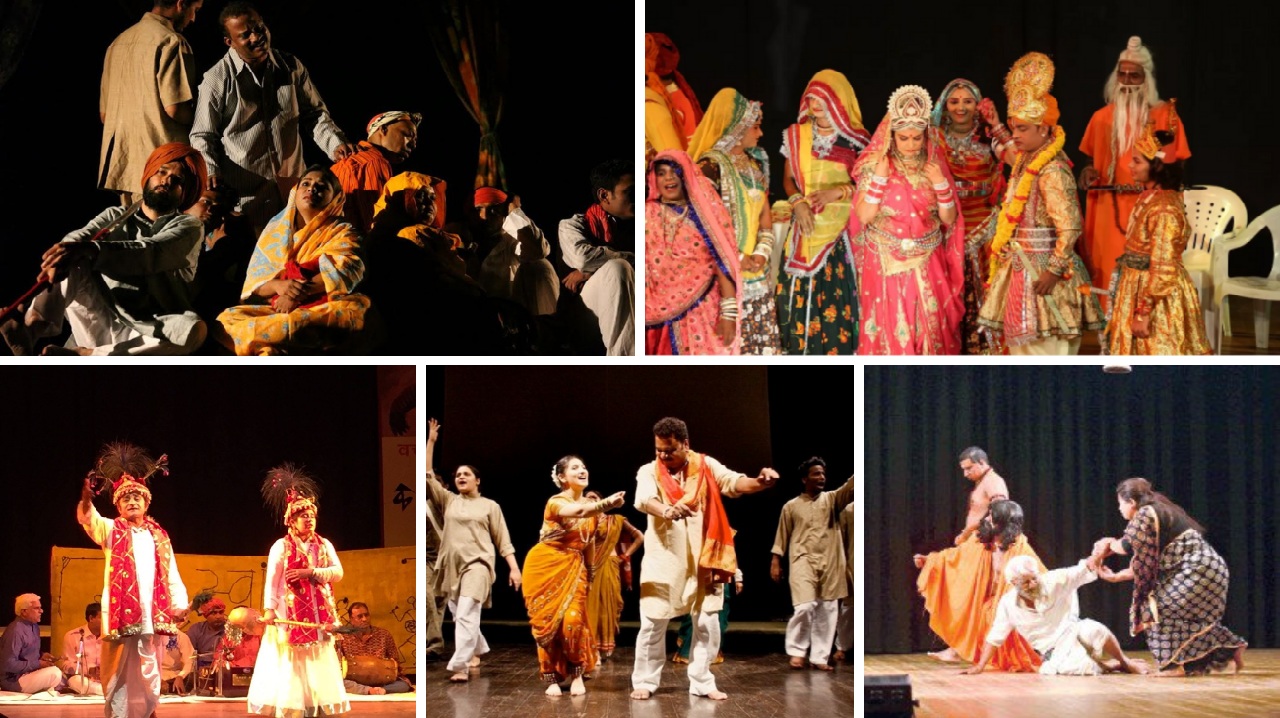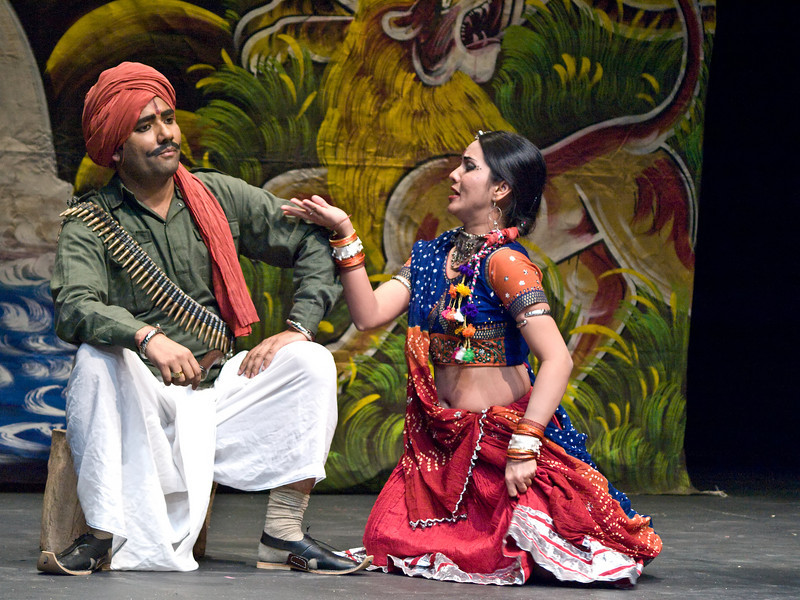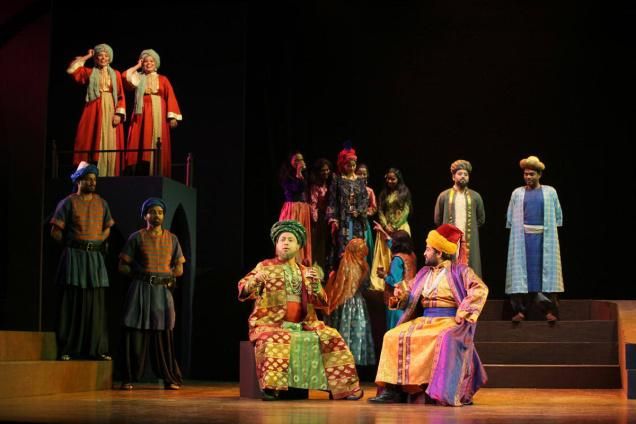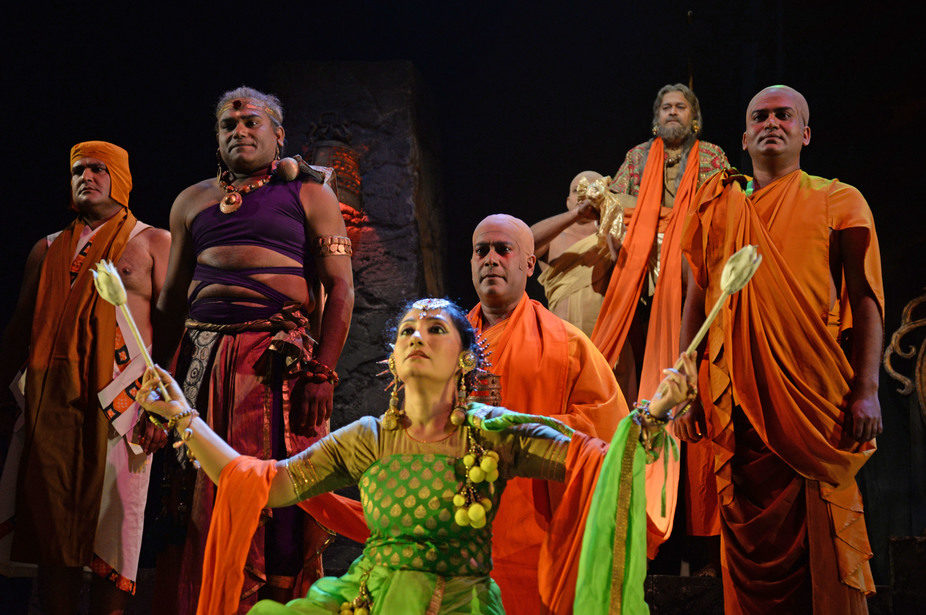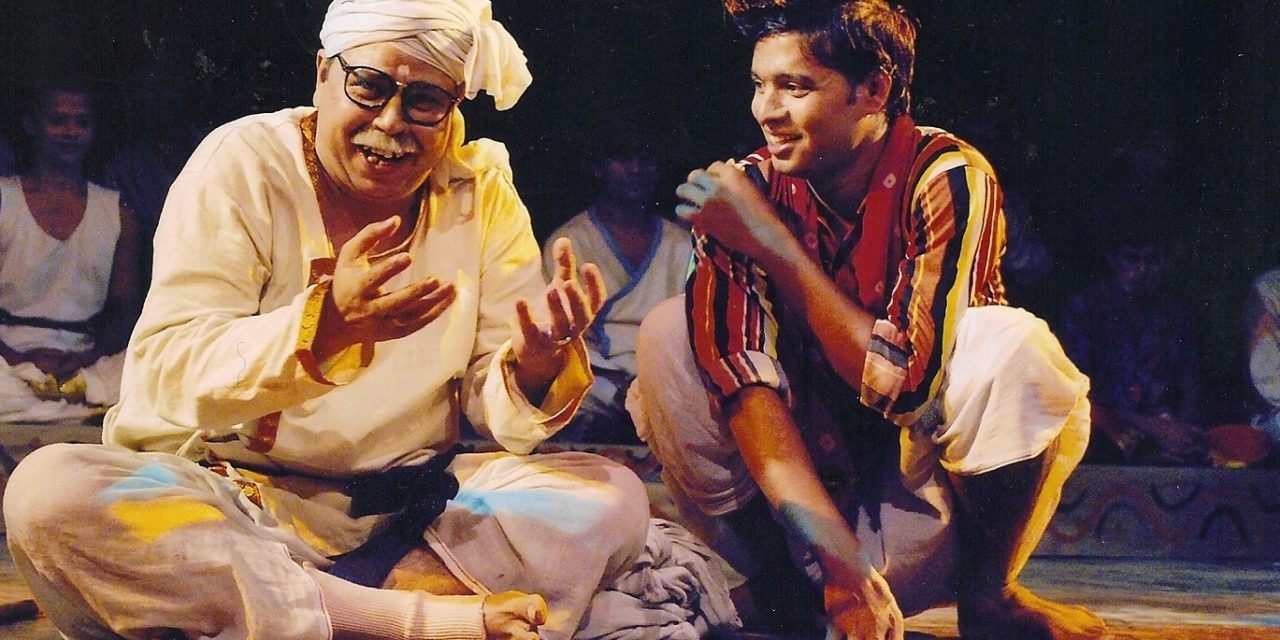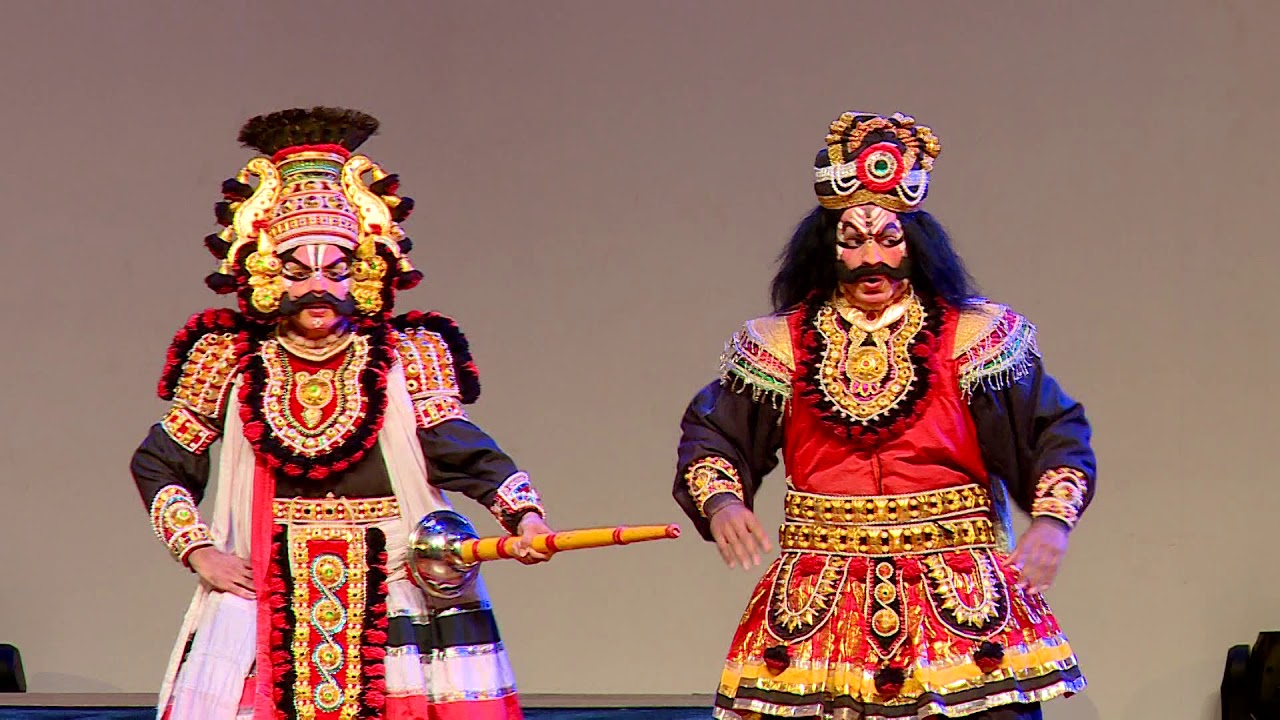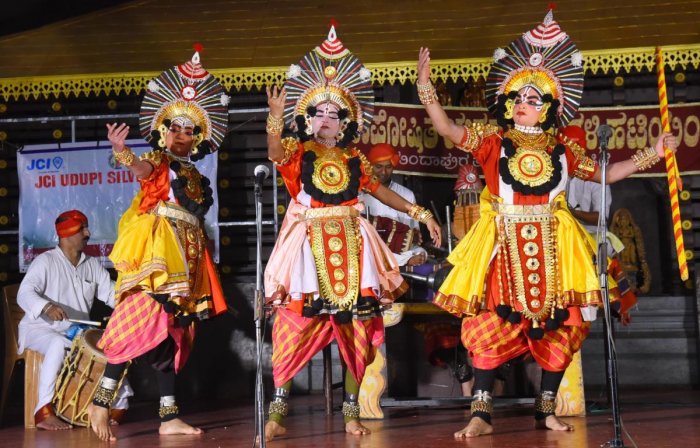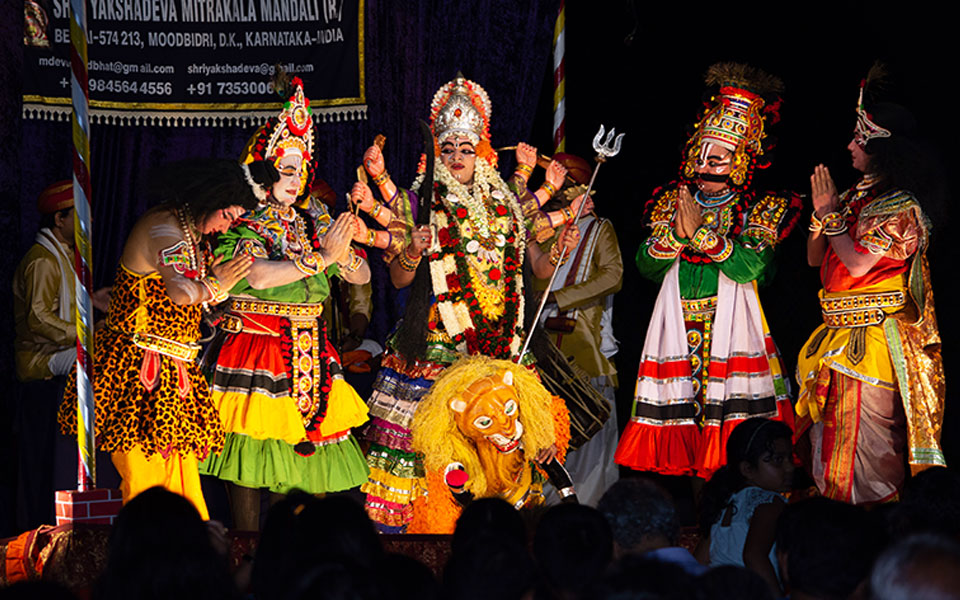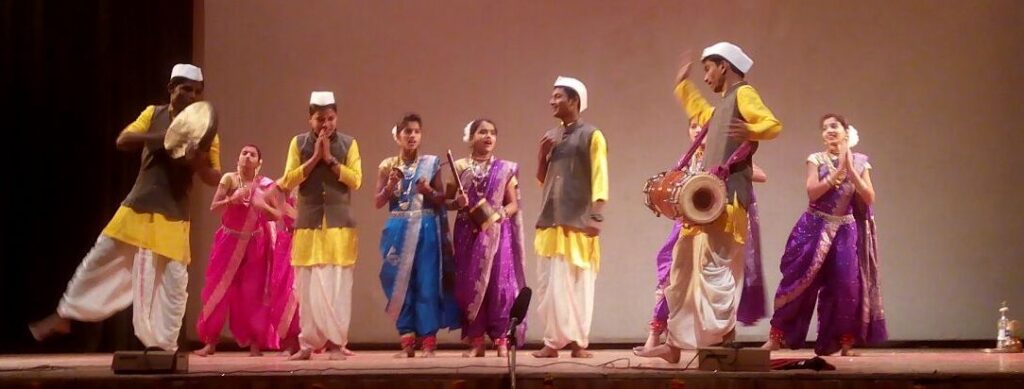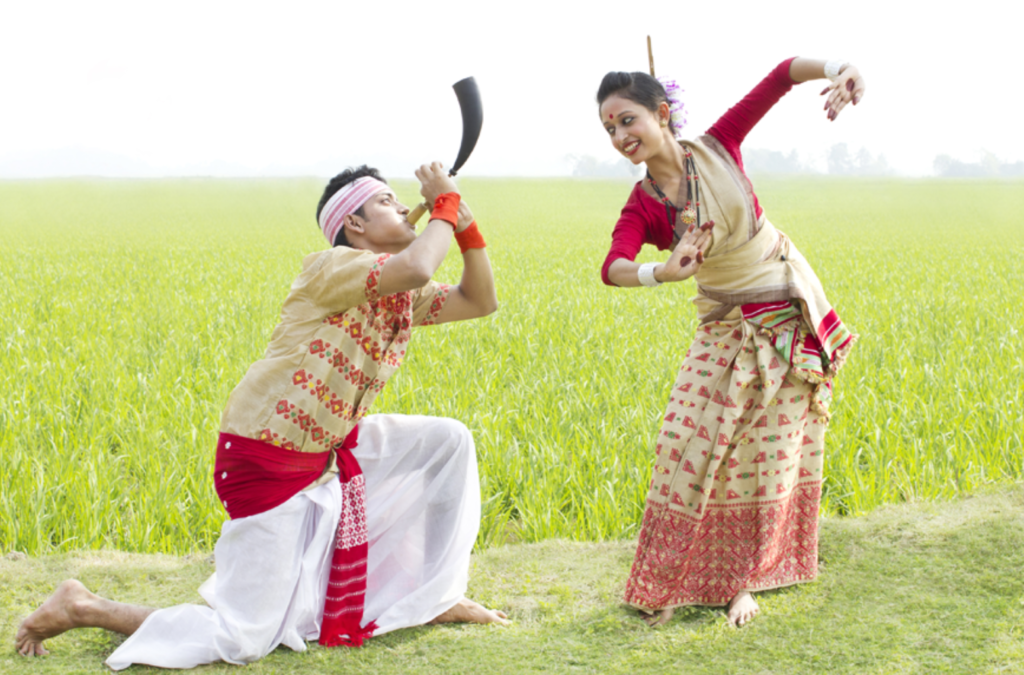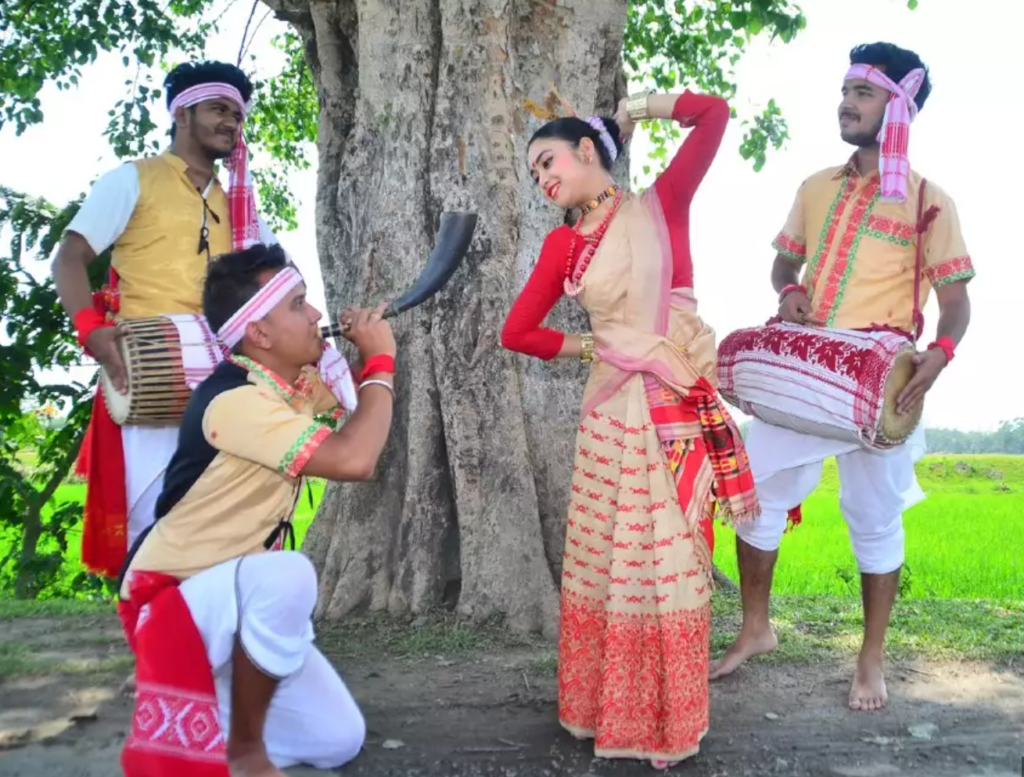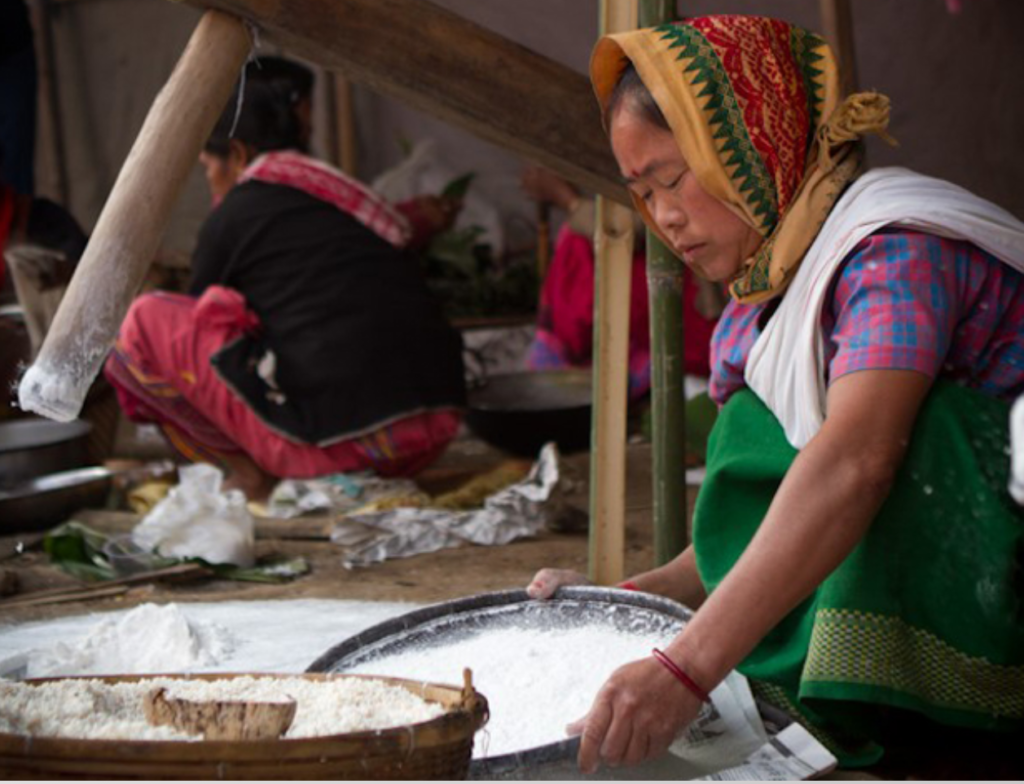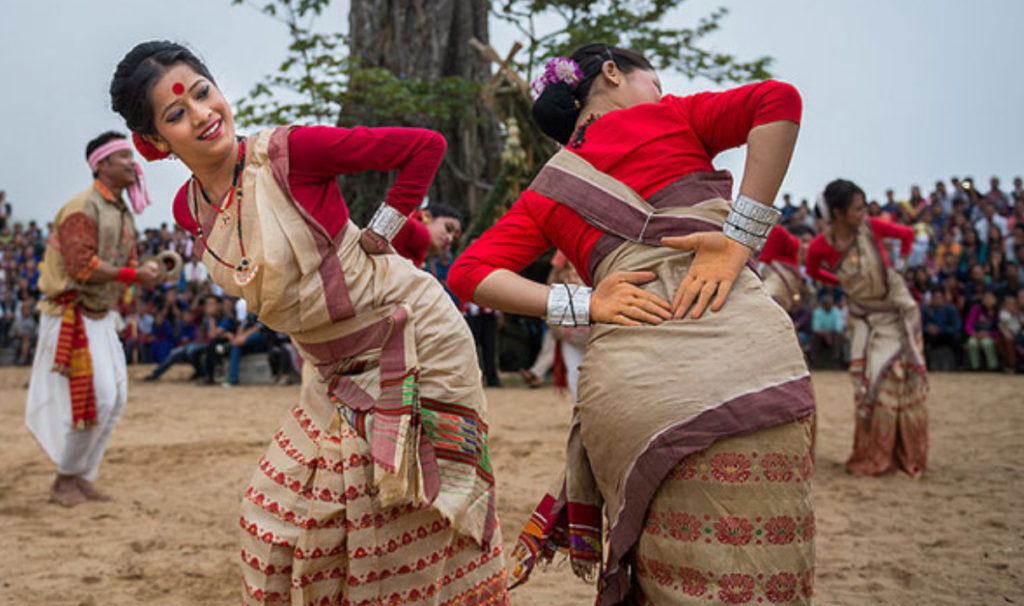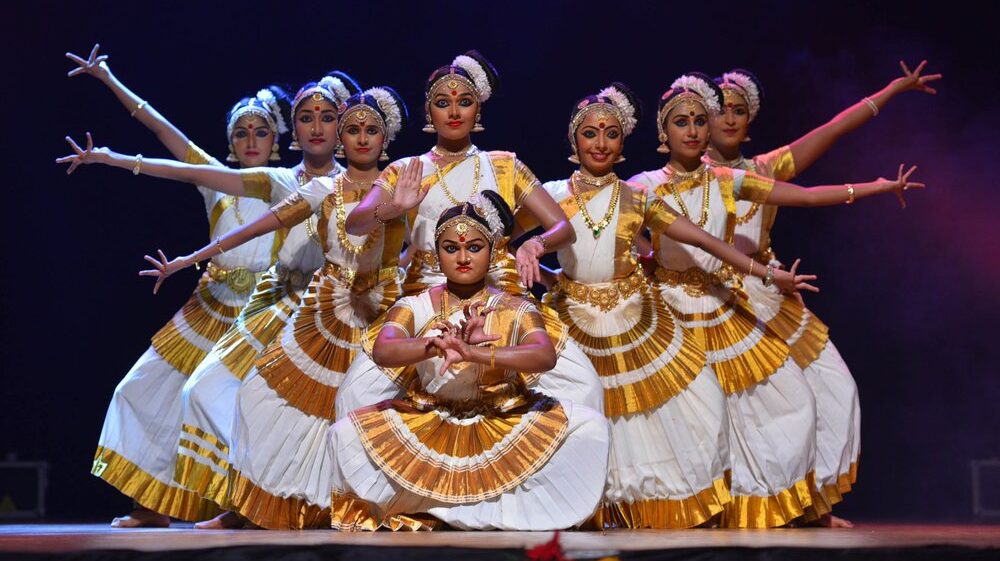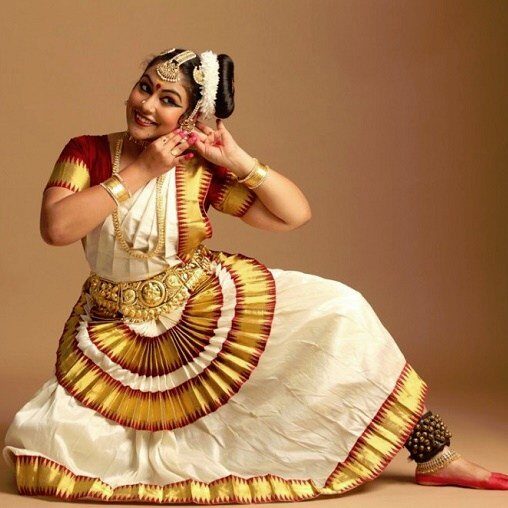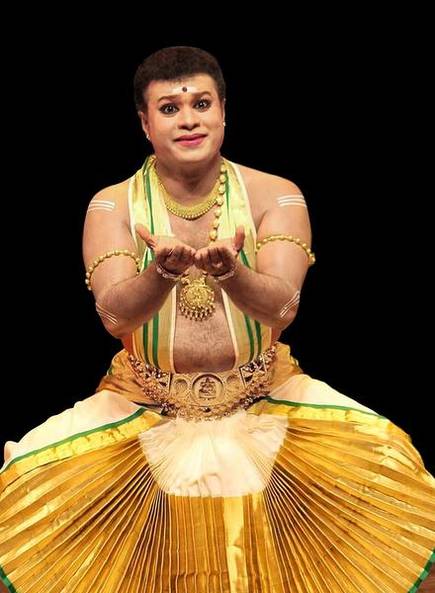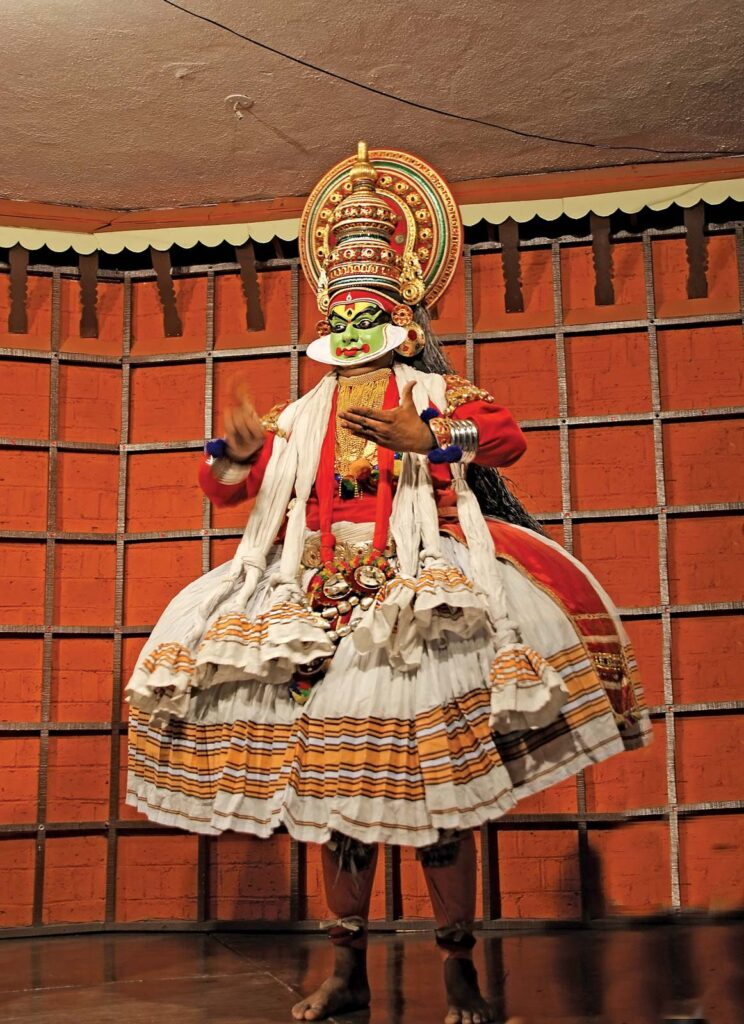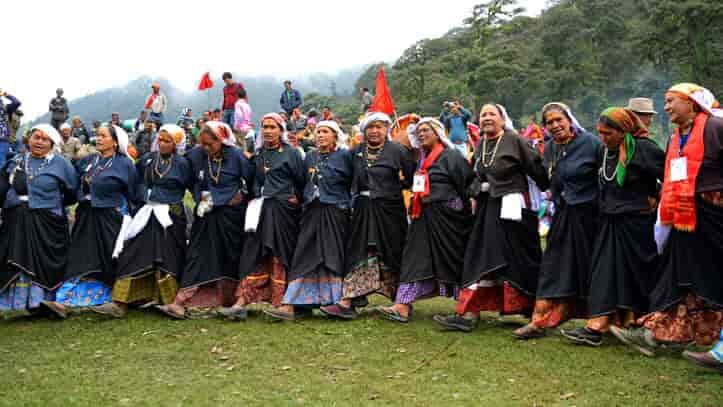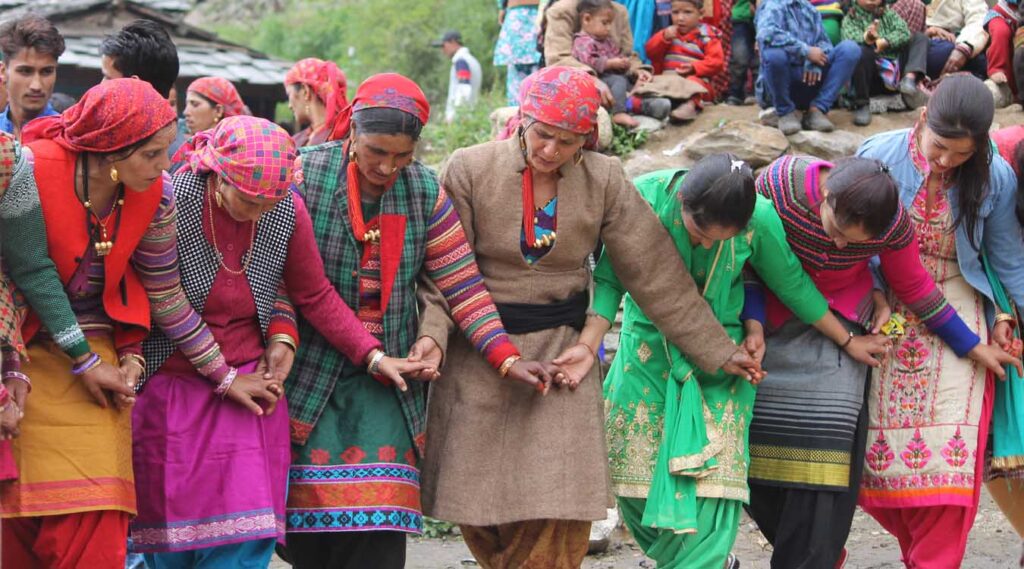Folk Dances of India: Ghoomar
Dhanak Preet ki sar pe odh kar ghoomar ghoomar ghoome
O lalak reet sab jag ki chhord kar ghoomar ghoomar ghoome
Dhola wale thaant, ghoomar ghoomar ghoome re baisa, ghoomar ghoome re
Ghoomar Lyrics, Padmaavat
Rajasthan is well famous for its vibrant traditions, enthusiastic dance forms and elegant culture. Ghoomar is just another spectacle of this diversity and culture that started with the Bhil tribe to worship Goddess Sarasvati and is now embraced by other Rajasthani communities.1 Typically performed by women, Ghoomar gained popularity during the reign of Rajputanas, who ruled Jaipur after defeating the Bhils. It is believed that the two communities embraced this folk dance form to signify peace.1
This Folk dance is performed by a group of women moving circularly, swirling and twirling around in their flowing robes called ‘ghagharas’, a traditional Rajasthani long skirt. This spectacular folk dance derived its name from ‘ghoomna’ and is elegantly showcased by women wearing a veil, ‘ghoonghat’ on their head covering their face.2 The upbeat rhythm and graceful and elegant gestures like pirouettes, finger-snapping, beating palms, and other foot movements maintain the tempo. This splendid spectacle fills the body with enthusiasm and zeal for our old long-standing Indian traditions.
According to rituals, it is mostly performed by the newly married bride on being welcomed to her new marital home. Ghoomar is often celebrated at weddings, festivals and other religious occasions too.2,3 This folk dance symbolizes the transformation of young girls to womanhood in the Rajput community and traditionally performed in wedding attire.3,4 Kundan, mirror and silver jewellery are used as accessories for the celebration. Women are seen wearing joyous, vibrant colours of red, orange, pink with heavy embroidery and mirror work. They cover their face with a veil threaded with lace and zari borders.2,4 These bright colours signify prosperity and high enthusiasm filled within the community.
Ghoomar is famous all over India and is being performed by various artists and celebrities in movies. Deepika Padukone took more than a month to learn this folk dance to get her footwork right for the film Padmavati. 4
In today’s world, this dance is performed by all ages of women worldwide and is cherished as a historically and culturally significant entertainment folk dance form.3 It showcases the rich culture of Rajasthan through aesthetically pleasing movement and traditional attire. Tourism in Rajasthan has boosted due to the peculiarities of regions, their manner of dressing, traditions, and folk dances. Ghoomar was a tribal dance that graduated to a folk routine that has now assumed international proportions thanks to a vibrant culture and its recognition as a pride of India.
_________________________________
Independent Project by Sezal Chug
Guide: Prof. Manohar Khushalani
__________________________________
-
1.Wikipedia E. Ghoomar. The free Encyclopedia. https://en.wikipedia.org/wiki/Ghoomar
-
2.CultureTrip the. Ghoomar. theculturetrip. https://theculturetrip.com/asia/india/articles/why-ghoomar-is-one-of-the-worlds-best-local-dances/
-
3.Utsavpedia T. Ghoomar. utsavpedia.com. https://www.utsavpedia.com/cultural-connections/ghoomar-of-marwar-inspiring-indian-dressing-for-centuries/
-
4.RajasthanDirect the. Ghoomar. rajasthandirect. https://www.rajasthandirect.com/culture/dance/ghoomar
